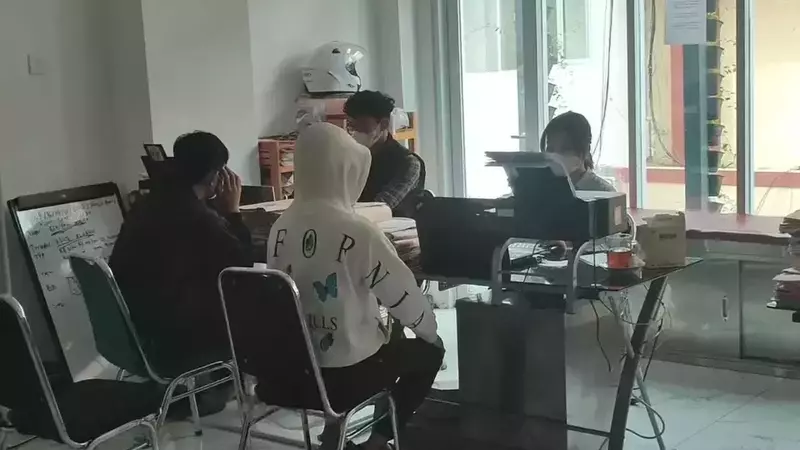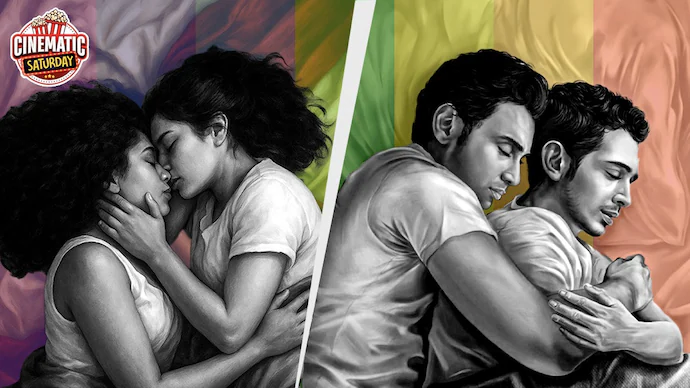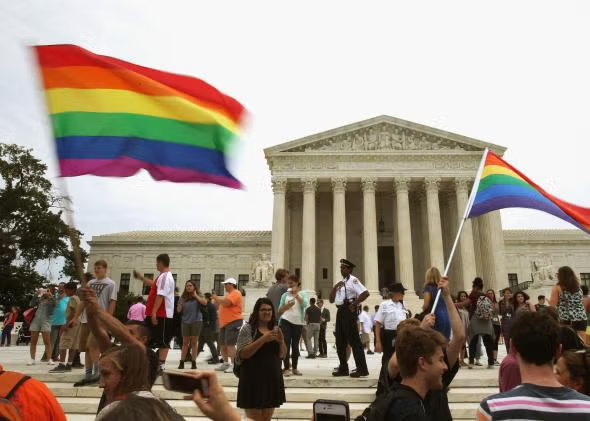Introduction: Pride, Progress, and Persistent Challenges
Pride Month, celebrated each June, is a vibrant testament to the resilience, diversity, and achievements of the LGBTQ+ community. It is a time to honor the struggles overcome since the Stonewall Riots of 1969, which sparked the modern gay rights movement, and to celebrate the strides made toward equality and acceptance. However, beneath the rainbow flags and festive parades lies a sobering reality: significant mental health disparities persist, particularly for those who navigate multiple marginalized identities. A groundbreaking study from the University of Delaware, led by Assistant Professor Eric Layland, published in June 2025, sheds light on the compounded challenges faced by Black, Latinx, and Afro-Latinx gay, bisexual, and other sexual minority young men. This research, conducted during a critical developmental period—late adolescence to early adulthood—reveals how the intersection of racism and heterosexism creates profound mental health burdens, underscoring the urgent need for tailored interventions and systemic change.
This expanded exploration delves into the study’s findings, situates them within the broader historical and cultural context of the LGBTQ+ movement and racial justice, and examines the unique stressors faced by sexual minority men of color. By weaving together insights from psychology, sociology, and cultural studies, this article aims to provide a comprehensive understanding of the mental health challenges these young men face, the protective factors that can foster resilience, and the societal changes needed to support their well-being. The discussion is structured to guide readers through the study’s methodology, key findings, historical parallels, cultural influences, and actionable recommendations for creating a more inclusive future.
Historical Context: The Roots of Intersectional Marginalization
The Legacy of the LGBTQ+ Movement
The modern LGBTQ+ rights movement traces its origins to the Stonewall Riots, a series of spontaneous demonstrations by members of the gay community in response to a police raid at the Stonewall Inn in New York City in June 1969. These events, led largely by transgender women of color like Marsha P. Johnson and Sylvia Rivera, marked a turning point in the fight for queer liberation. However, the mainstream narrative of the movement has often centered white, cisgender gay men, sidelining the contributions and struggles of people of color, particularly Black, Latinx, and Afro-Latinx individuals. This erasure mirrors broader societal patterns of marginalization, where racial and ethnic minorities within the LGBTQ+ community face unique challenges that are often overlooked.
In the decades following Stonewall, the LGBTQ+ movement achieved significant milestones, including the decriminalization of homosexuality, the legalization of same-sex marriage in 2015, and increased visibility in media and politics. Yet, these victories have not been equally distributed. Black, Latinx, and Afro-Latinx sexual minorities continue to face systemic barriers, including higher rates of discrimination, economic insecurity, and limited access to affirming healthcare. The University of Delaware study builds on this historical context, highlighting how the intersection of sexual orientation and race/ethnicity creates compounded stressors that impact mental health.
Racial and Ethnic Struggles in the United States
The late 1960s, when the LGBTQ+ movement gained momentum, was also a period of intense racial justice activism. The Civil Rights Movement, led by figures like Martin Luther King Jr., sought to dismantle institutionalized racism, resulting in landmark legislation like the Civil Rights Act of 1964 and the Voting Rights Act of 1965. However, systemic racism persisted, manifesting in economic disparities, police violence, and discriminatory policies. For Latinx communities, additional challenges included anti-immigrant sentiment and policies that threatened family stability, such as fears of deportation, which remain relevant today.
Afro-Latinx individuals, who straddle the identities of Black and Latinx, face unique challenges rooted in the historical legacy of colonialism and slavery in Latin America and the Caribbean. The blending of African, Indigenous, and European cultures in Latinx communities has created rich cultural identities but also complex social dynamics, including colorism and anti-Blackness within Latinx spaces. These historical and ongoing racial dynamics intersect with homophobia and heterosexism, creating a web of discrimination that the University of Delaware study seeks to untangle.
The University of Delaware Study: Methodology and Scope
Research Design and Participants
Published in Developmental Psychology in June 2025, the University of Delaware study, led by Eric Layland, an assistant professor in the College of Education and Human Development, tracked the mental health trajectories of over 400 cisgender Black, Latinx, and Afro-Latinx gay, bisexual, and other sexual minority men aged 18 to 29. The study employed a longitudinal approach, collecting data over several years to examine how experiences of discrimination influenced mental health outcomes during the critical transition from adolescence to adulthood. This developmental period is marked by significant milestones, such as pursuing higher education, establishing careers, and forming adult identities, making it a pivotal time for mental health interventions.
The researchers focused on two primary forms of discrimination: racism, defined as prejudice or discrimination based on race or ethnicity, and heterosexism, defined as prejudice or discrimination against non-heterosexual individuals. By analyzing the frequency and sources of these experiences—ranging from family and community members to institutional settings like schools and law enforcement—the study identified patterns of anxiety and depression. The sample size and diversity of the participants allowed for a nuanced analysis of how these stressors intersect, particularly for those who identify as both racial/ethnic and sexual minorities.
Key Findings: The Impact of Compound Stigma
The study’s findings paint a stark picture of the mental health challenges faced by Black, Latinx, and Afro-Latinx sexual minority men. Participants who experienced frequent racism and heterosexism reported the highest levels of anxiety and depression, with symptoms peaking during late adolescence (around ages 18–20) and early adulthood (ages 21–24). These years are critical for identity formation, as young people navigate societal expectations, personal relationships, and professional aspirations. The emotional strain of discrimination during this period can disrupt these processes, leading to long-term consequences for mental health and overall well-being.
“The transition to adulthood is a time when mental health challenges often emerge and escalate,” said Eric Layland. “This study emphasizes how multiple sources of discrimination converge to impact the mental health of sexual minority men of color.”
While symptoms of anxiety and depression tended to decline by age 24, the persistence of these challenges during formative years underscores the need for early intervention. The study also highlighted the concept of compound stigma, where the simultaneous experience of racism and heterosexism amplifies mental health risks. For example, a Black gay man might face racial profiling from law enforcement while also encountering homophobic rejection from his community, creating a dual burden that exacerbates psychological distress.
Cultural Context: The Unique Experiences of Black, Latinx, and Afro-Latinx Men
Black Sexual Minority Men: Navigating Systemic Racism and Homophobia
Black gay, bisexual, and other sexual minority men face a unique intersection of systemic racism and homophobia. The legacy of slavery, segregation, and ongoing racial disparities in the United States has created a social environment where Black individuals are disproportionately affected by poverty, incarceration, and police violence. These systemic issues are compounded by homophobia within Black communities, where cultural norms around masculinity and religious beliefs can stigmatize non-heterosexual identities. For example, studies have shown that Black gay men are less likely to disclose their sexual orientation to family members, fearing rejection or ostracism.
The University of Delaware study found that Black participants who experienced frequent racism and heterosexism reported the earliest onset of anxiety symptoms, often linked to experiences of racial profiling or microaggressions in predominantly white spaces, coupled with homophobic attitudes in familial or community settings. These findings align with broader research indicating that Black sexual minority men are at heightened risk for psychological distress, substance use, and suicidal ideation due to these intersecting stressors.
Latinx Sexual Minority Men: Cultural Identity and Immigration Stress
Latinx sexual minority men face additional stressors rooted in cultural and societal dynamics. Latinx cultures, encompassing diverse nationalities like Mexican, Puerto Rican, and Cuban, often emphasize family cohesion, traditional gender roles, and religious values, which can conflict with non-heterosexual identities. The concept of machismo, a cultural ideal of hyper-masculinity, can create pressure to conform to heterosexual norms, leading to internalized homophobia or identity concealment. Additionally, immigration-related stressors, such as fears of deportation or family separation, disproportionately affect Latinx communities, further impacting mental health.
The Trevor Project’s 2023 report on Latinx LGBTQ+ youth found that 34% of Latinx LGBTQ+ young people worried about themselves or a family member facing detainment or deportation, contributing to elevated suicide risk. The University of Delaware study echoes these findings, noting that Latinx participants who experienced racism and heterosexism reported higher rates of depression, particularly when navigating anti-immigrant sentiment or family rejection. However, the study also highlighted a protective factor: a strong connection to cultural identity reduced the odds of suicide attempts by 24%, suggesting that embracing one’s heritage can foster resilience.
Afro-Latinx Sexual Minority Men: A Complex Intersection
Afro-Latinx sexual minority men occupy a particularly complex intersection, facing anti-Black racism, anti-Latinx prejudice, and homophobia. The Afro-Latinx identity, rooted in the African diaspora in Latin America and the Caribbean, is often marginalized within both Black and Latinx communities due to colorism and cultural biases. For example, Afro-Latinx individuals may face discrimination for their darker skin tones within Latinx spaces, while also encountering anti-Latinx sentiment in broader society. This layered marginalization can exacerbate feelings of isolation and psychological distress.
The University of Delaware study found that Afro-Latinx participants experienced similar patterns of anxiety and depression as their Black and Latinx counterparts, but the intensity of their symptoms was often heightened due to the triple burden of racism, anti-Latinx prejudice, and heterosexism. These findings underscore the need for interventions that acknowledge the unique experiences of Afro-Latinx individuals, who may feel excluded from both racial and ethnic communities.
The Role of Minority Stress Theory
The University of Delaware study is grounded in minority stress theory, a framework developed by psychologist Ilan Meyer to explain how marginalized groups experience chronic stress due to societal prejudice. For sexual minority men of color, minority stress manifests through experiences like discrimination, microaggressions, and internalized stigma. The theory posits that these stressors lead to poorer mental health outcomes, including anxiety, depression, and suicidality, unless mitigated by protective factors like social support or cultural pride.
Research has consistently shown that LGBTQ+ individuals face higher rates of mental health challenges than their heterosexual peers, with bisexual and transgender individuals reporting the highest rates within the community. For example, a 2024 survey by The Trevor Project found that 44% of LGBTQ+ young people seriously considered suicide in the past year, with Latinx transgender and nonbinary youth reporting even higher rates (53%). Black and Latinx sexual minority men, as highlighted in Layland’s study, face additional layers of stress due to racial and ethnic discrimination, which compound the effects of homophobia or biphobia.
Compound Stigma: A Dual Burden
The concept of compound stigma, central to Layland’s research, refers to the synergistic effect of multiple forms of discrimination. For Black, Latinx, and Afro-Latinx sexual minority men, this might include racial slurs from white peers, homophobic rejection from family members, or exclusion from both LGBTQ+ and racial/ethnic communities. These experiences create a feedback loop of stress, where each form of discrimination amplifies the others, leading to heightened psychological distress.
For instance, a Latinx bisexual man might face racism within predominantly white LGBTQ+ spaces, such as assumptions about his cultural background, while simultaneously encountering homophobia within his Latinx community, where his sexual orientation is stigmatized. This dual rejection can lead to feelings of alienation, low self-esteem, and increased risk of mental health challenges. The University of Delaware study found that participants who experienced frequent compound stigma reported the most severe symptoms, with anxiety peaking earlier and lasting longer than in those who faced only one form of discrimination.
Protective Factors and Interventions
Culturally Responsive Mental Health Support
The University of Delaware study emphasizes the need for culturally responsive mental health interventions tailored to the unique experiences of Black, Latinx, and Afro-Latinx sexual minority men. These interventions should go beyond generic therapy models to address the specific stressors of racism, heterosexism, and, for Latinx individuals, immigration-related concerns. Layland and his team advocate for programs that teach coping skills, such as reframing negative experiences or building resilience through mindfulness and cognitive-behavioral techniques.
One promising approach is the development of peer support networks, where young men can connect with others who share similar identities and experiences. Organizations like The Trevor Project and the National Queer and Trans Therapists of Color Network have pioneered such initiatives, offering spaces where LGBTQ+ people of color can find community and validation. For example, Mi Centro, a program by the Los Angeles LGBT Center, provides Spanish-language support groups and therapy designed specifically for Latinx LGBTQ+ individuals, addressing both cultural and sexual orientation-related challenges.
Celebrating Cultural Identity
A key finding from the study is the protective role of cultural identity. For Latinx and Afro-Latinx participants, a strong connection to their racial or ethnic heritage was associated with lower rates of psychological distress and suicide attempts. This aligns with broader research, such as The Trevor Project’s 2023 report, which found that Latinx LGBTQ+ youth who viewed their race/ethnicity as an important part of their identity had 24% lower odds of attempting suicide. Interventions that celebrate cultural pride—through storytelling, art, or community events—can help young men reclaim their identities and build resilience against stigma.
For Black sexual minority men, cultural pride might involve connecting with the rich history of Black queer activism, from the contributions of Bayard Rustin in the Civil Rights Movement to contemporary figures like Billy Porter. For Latinx and Afro-Latinx men, cultural pride could involve engaging with traditions like Día de los Muertos or celebrating the influence of queer Latinx icons like Ricky Martin or Bad Bunny, who has challenged traditional notions of masculinity in Latinx music.
Systemic Change and Allyship
While individual and community-based interventions are crucial, Layland emphasizes the need for systemic change to address the root causes of discrimination. This includes advocating for policies that protect LGBTQ+ people of color from employment discrimination, ensuring access to affirming healthcare, and reforming law enforcement practices to reduce racial profiling. The study calls on white and heterosexual allies to actively work against prejudice, such as challenging microaggressions in everyday settings or supporting anti-racist initiatives.
Community organizations can play a vital role in this effort. For example, Delaware-based groups like I Am Me, Inc., and Alphabet Soup Kids provide safe spaces for LGBTQ+ youth of color to connect and thrive. Nationally, organizations like the Human Rights Campaign and GLSEN work to promote LGBTQ+ inclusion in education and policy, addressing the systemic barriers that contribute to mental health disparities.
The Broader Impact: Mental Health and Social Justice
Health Disparities and Intersectionality
The University of Delaware study contributes to a growing body of research on health disparities among LGBTQ+ people of color. Intersectionality, a framework developed by legal scholar Kimberlé Crenshaw, underscores how overlapping identities—such as race, ethnicity, sexual orientation, and gender—create unique experiences of oppression. For Black, Latinx, and Afro-Latinx sexual minority men, intersectionality means navigating a world where racism, homophobia, and, for some, anti-immigrant bias intersect to create disproportionate challenges.
These disparities are evident in mental health statistics. A 2021 report from the Williams Institute found that Latinx LGBT adults are more likely to experience depression and economic insecurity than their non-LGBT counterparts. Similarly, a 2016 CDC analysis projected that 1 in 2 Black men who have sex with men and 1 in 4 Latino men who have sex with men will be diagnosed with HIV in their lifetime, a health disparity that further compounds mental health challenges due to stigma and fear.
The Role of Pride Month
Pride Month serves as both a celebration and a call to action. While it highlights the progress made toward LGBTQ+ equality, it also draws attention to the work that remains. The University of Delaware study, released during Pride Month 2025, amplifies the voices of Black, Latinx, and Afro-Latinx sexual minority men, whose experiences are often marginalized in mainstream narratives. By centering their stories, the study challenges communities to address the specific needs of those at the intersections of multiple identities.
Pride events, from parades to community forums, can serve as platforms for raising awareness about mental health disparities and advocating for change. For example, Pride organizations can partner with mental health providers to offer workshops or resources tailored to people of color, ensuring that celebrations are inclusive and responsive to diverse needs.
Conclusion: A Path Forward
The University of Delaware study by Eric Layland and his team is a powerful reminder of the mental health challenges faced by Black, Latinx, and Afro-Latinx gay, bisexual, and other sexual minority young men. By documenting the impact of compound stigma—racism and heterosexism—the study highlights the urgent need for culturally responsive interventions, community support, and systemic change. As these young men navigate the critical transition to adulthood, they deserve resources that affirm their identities, celebrate their resilience, and address the unique stressors they face.
The findings also underscore the importance of cultural pride and peer connection as protective factors. By fostering environments where Black, Latinx, and Afro-Latinx sexual minority men can thrive—whether through therapy, community organizations, or policy advocacy—society can help mitigate the effects of discrimination and promote mental health equity. As Pride Month continues to shine a light on the LGBTQ+ community, let it also illuminate the path toward a more inclusive, supportive future for all its members, particularly those who bear the weight of multiple marginalizations.



















0 Comments